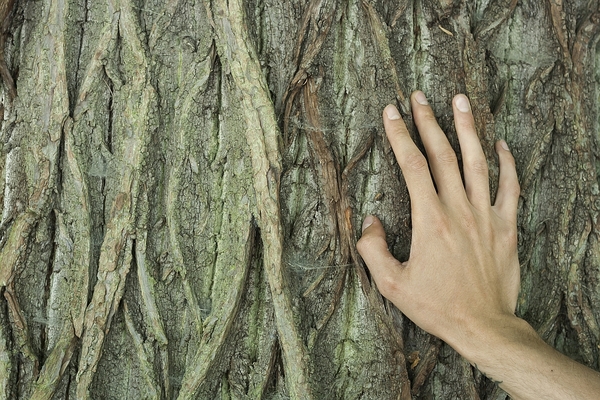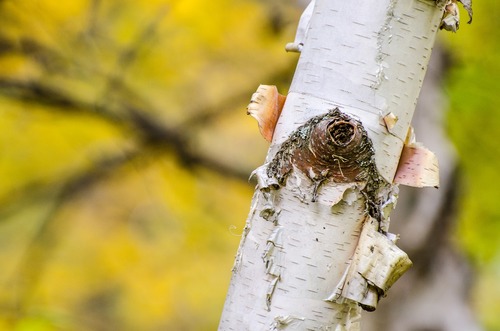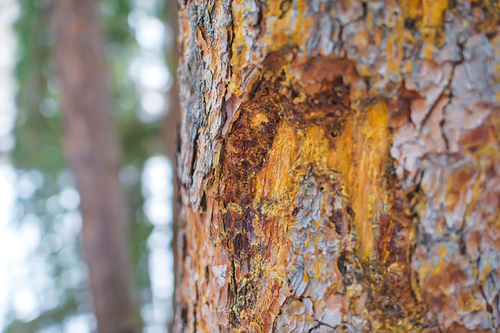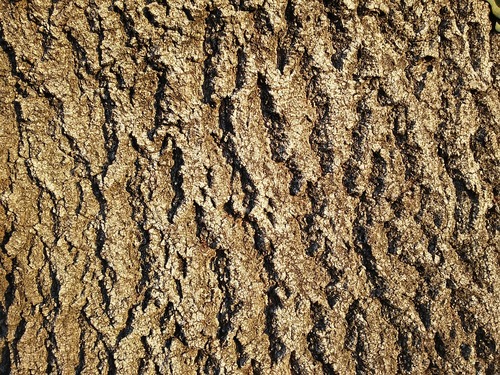Tree Bark: That Beneficial Barrier

Introduction
Tree bark serves as nature's armor, protecting the vital inner workings of trees from external threats. However, its significance extends far beyond mere protection. While bark fails to attract the same level of attention that roots, leaves, fruit and flowers do, it remains a critical component of tree biology , equally deserving of discussion. Understanding the multifaceted role of tree bark unveils a world of ecological importance and human benefits. At Arborist Now, based in the San Francisco Bay Area, we delve into the depths of this often-underappreciated natural wonder to uncover its secrets and showcase its value.
The Protective Shield of Tree Bark
A Close-up View of Tree Bark - Photo by Rkit on Pixabay
Tree bark acts as a formidable barrier against various environmental stressors, including pests, pathogens, and physical damage. Its outermost layer, the periderm , forms a protective shield that repels water and prevents pathogens from infiltrating the tree's inner tissues. Beneath the periderm lies the cork cambium , a layer responsible for producing new cells to replace damaged bark. This dynamic process ensures the continuous renewal of the protective barrier, fortifying the tree against external threats. The innermost layer, called the phloem , transports sugars from sites of photosynthesis (the leaves) to the roots.
Beyond its physical defense mechanisms, tree bark also possesses chemical properties that deter pests and pathogens. Many tree species produce secondary metabolites, such as tannins and phenolics, which exhibit antimicrobial and insecticidal properties. These compounds not only protect the tree from harmful organisms but also contribute to the overall health of the surrounding ecosystem by suppressing pest populations.
Bark Variation

Peeling Birch Bark - Photo by Elljay on Pixabay
A brief walk in the woods quickly reveals that barks differ greatly from one to the next. Birch (Betula spp.) bark is thin, paper-like and peels away from the trunk easily, while sequoia (Sequoiadendron giganteum) bark may be as much as 3 feet thick. While scientists suspect that some barks serve no particular adaptive function, it is likely that the bark of most species has evolved to provide protection from specific threats in the habitat.
For example, trees from fire-prone regions often produce thick bark – giant sequoias provide an excellent example of this, as do many pines of the southeastern United States, who must also cope with periodic fires. Some botanists believe that trees bearing smooth bark often do so to prevent fungal colonization, and they cite the fact that many such species evolved in rainforest habitats, where these fungi are ubiquitous. However, other botanists believe the slippery bark serves to prevent insects from clinging to the bark and feeding on the tree’s delicate tissues. In some cases, such as manzanita trees (Arctostaphylos spp.), the thin, peeling bark also contains tannins, which help to dissuade insects.
Regulating Temperature and Moisture
In addition to its protective functions, tree bark plays a crucial role in regulating temperature and moisture levels within the tree. The outer bark insulates the tree from extreme temperatures, helping to maintain a stable internal environment conducive to growth and survival. During periods of drought, certain tree species can adjust the permeability of their bark to minimize water loss through transpiration, thereby conserving precious moisture reserves.
Moreover, tree bark serves as a reservoir for essential nutrients and water, storing them for later use by the tree. The inner bark, or phloem, transports these vital resources from the leaves to other parts of the tree, ensuring proper growth and development. By maintaining optimal moisture levels and nutrient distribution, tree bark sustains the tree's overall health and resilience in the face of environmental challenges.
Enhancing Biodiversity and Ecosystem Services
Beyond its direct benefits to individual trees, tree bark fosters biodiversity and supports a myriad of ecosystem services. Bark-dwelling organisms, such as insects, fungi, and lichens, rely on the unique microhabitats provided by different bark textures and compositions. These diverse communities contribute to nutrient cycling, decomposition, and pollination, ultimately enriching the surrounding environment.
Furthermore, decomposing bark contributes organic matter to the soil, enriching its fertility and promoting plant growth. As trees shed their bark, they create habitat niches for a wide range of soil organisms, from earthworms to microbial decomposers. This complex web of interactions underscores the interconnectedness of trees, soil, and biodiversity, highlighting the importance of preserving and managing healthy tree populations.
Benefiting Others
Many other creatures benefit from the protective covering as well. Squirrels, for example, often strip the bark of trees. Although the reasons they engage in this behavior are not yet fully understood, it is likely related to their need for additional nutrients. Of course, porcupines and beavers are famous for their bark-eating habits, but deer, rabbits and rodents also dine on bark when times are tough.
Humans also benefit from tree bark. Although manufacturers currently synthesize aspirin in a lab, the active ingredient lies within willow bark, which was used to make analgesic teas for centuries. Currently, scientists are researching the chemical properties of pine tree bark, which contains compounds that may be helpful for treating melanoma. Some people, eager to find a cure for conditions that are hard to treat, have begun experimenting with tree bark extracts. The inner bark of some trees even serves as an emergency food source.
Damaged Bark

A Tree Showing Clear Signs of Bark Injury
Trees sustain damage to their bark from a variety of sources, including wildlife, pests, pathogens, lightning, hail, vandals, landscaping crews and construction activities. Damage from gnawing wildlife, boring pests, and disease-causing organisms weakens trees and exposes them to further harm. Bark damage exposes trees to myriad threats, and, if left untreated, the tree can ultimately die.
Swift action is crucial when trees sustain bark damage to prevent infections and maintain their health. With proper treatment, including pruning and wound dressing, trees can produce callus wood to protect themselves and recover from injuries, ensuring their longevity in urban environments.
Conclusion
Tree bark serves as a multifunctional marvel that embodies the resilience and ingenuity of nature. From its protective properties to its role in regulating environmental conditions and supporting biodiversity, it plays a pivotal role in sustaining ecosystems and enhancing human well-being. By understanding and appreciating the value of tree bark, we can cultivate a deeper connection with the natural world and strive towards sustainable stewardship of our urban forests. At Arborist Now, we are committed to preserving the health and vitality of trees, one bark at a time.
If one of your trees suffers damage to its bark, contact Arborist Now without delay. One of our ISA-certified arborists will inspect the damage, devise a treatment plan and help restore your tree's health.
Originally published on May 26, 2016.






